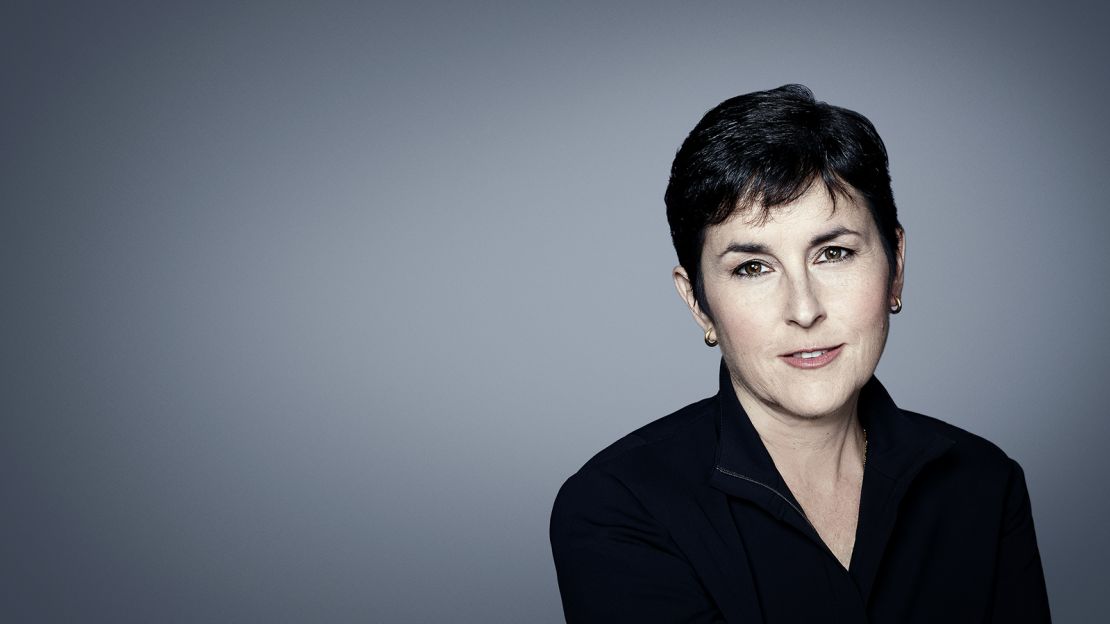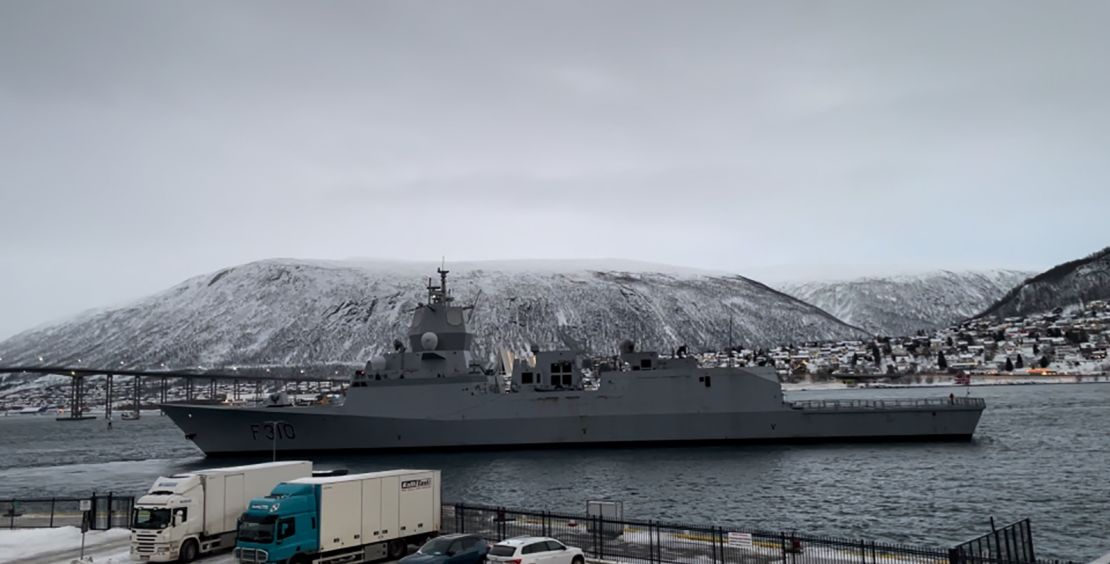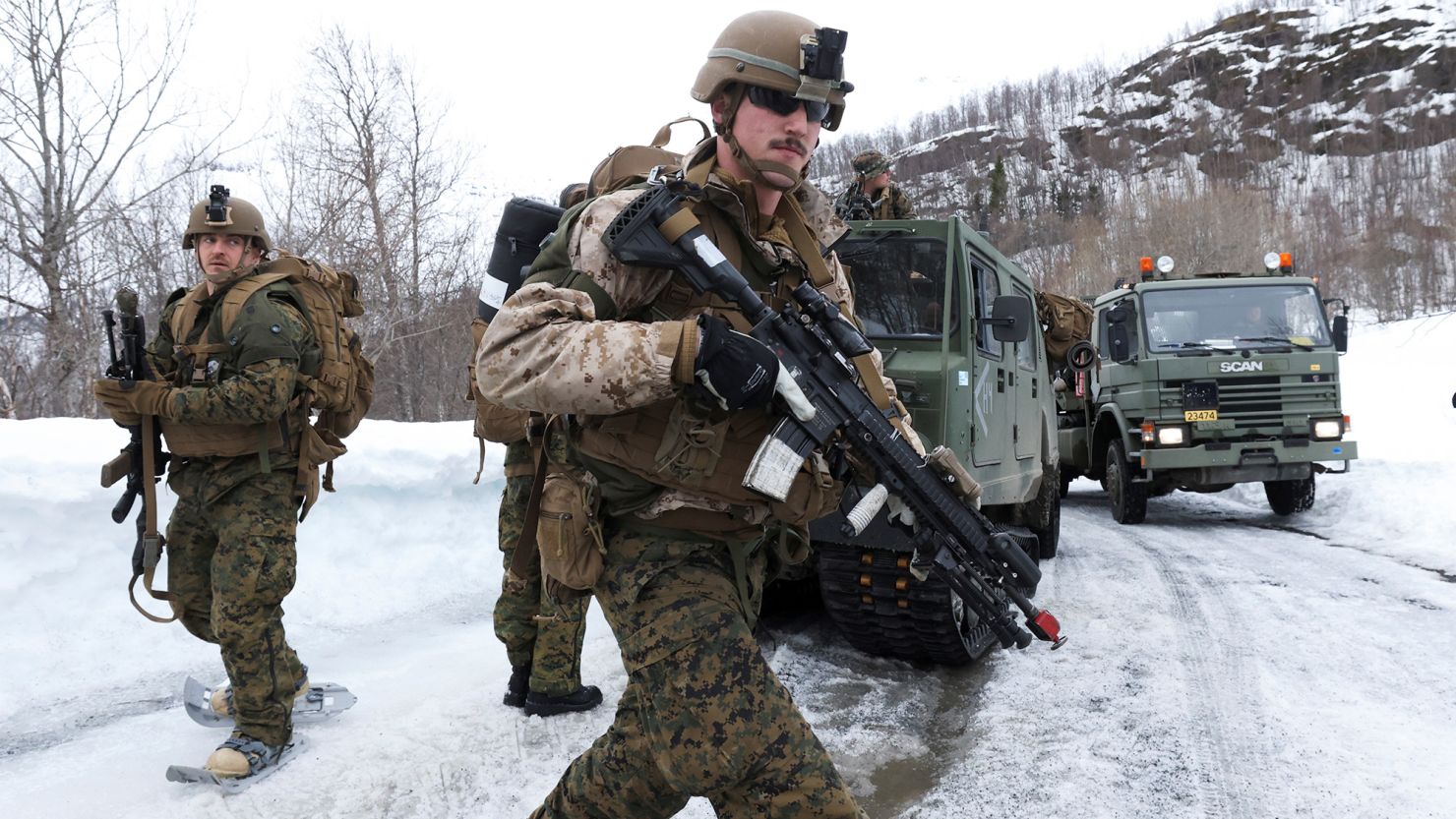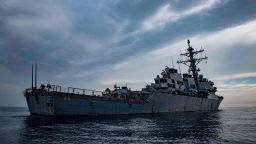Editor’s Note: Frida Ghitis, a former CNN producer and correspondent, is a world affairs columnist. She is a weekly opinion contributor to CNN, a contributing columnist to The Washington Post and a columnist for World Politics Review. The views expressed in this commentary are her own. View more opinion on CNN.
There’s something otherworldly about the Arctic. During the Polar Night, which can last for months, the sun does not rise above the horizon, leaving the region in continuous darkness broken by periods of almost mystical twilight.

On cloudless nights, one can see the Aurora Borealis dance across the vast skies, its swirling greens and blues contrasting with the stark white of the endless expanses of snow.
But then, at the Tromsø harbor in Norway’s northernmost reaches, the natural landscape is broken by the metallic military grey of a Norwegian Navy frigate. It’s a reminder that the Arctic is not immune from the tensions besetting the rest of the globe.
In fact, the temperatures here are rising nearly four times faster than in the rest of the planet — and that’s just the thermometer’s reading. When it comes to geopolitics, the coldest region in the world risks becoming its hottest.
In a recent speech to the Arctic Council — the intergovernmental body that acts as the region’s steward — Admiral Rob Bauer, the head of NATO’s Military Committee, warned, “We cannot be naïve and ignore the potentially nefarious intentions of some actors in the region.”
“Conflict,” he said, “can present itself at any moment, in any domain, including the Arctic,” he added, ominously.
That was not hyperbole. The region’s fast-growing militarization, fueled by increased international tensions, are compounding a push to benefit from the Arctic’s strategic and economic potential. Melting ice is also creating new shipping lanes and opening natural resources to exploitation, making strategic control of the Arctic ever more enticing.

A few hundred miles from Tromsø’s port, the Kola Peninsula in Russia is home to the country’s Northern Fleet, where multiple ballistic missile submarines, cruisers, destroyers, frigates, troop concentrations, airfields and other military assets are massed near NATO’s border.
This past weekend, Russian President Vladimir Putin issued a thinly veiled threat to Finland, one of eight countries in the Arctic and NATO’s newest member, warning that “there will be problems,” between the two countries now that Helsinki joined the alliance. Russia, he said, will soon concentrate military units near the northern part of the countries’ shared frontier.
Just weeks earlier, Finland closed its border crossings with Russia, accusing Moscow of launching a “hybrid operation” – weaponizing desperate migrants by helping them reach the frigid European border in the Arctic in an effort to destabilize the European Union.
In an interview with state media, Putin claimed that the two countries had no problems before Finland joined NATO, having resolved their territorial disputes in the 20th century. But Finland remembers how they were “resolved” — with a Russian invasion and a ferocious 1939-1940 Winter War that left Russia in possession of parts of Finland.
When Russia invaded Ukraine last year, Finland decided neutrality did not guarantee safety. It needed the protection of joining NATO.
Tensions along the Arctic have grown exponentially since Russia’s unprovoked 2022 invasion of Ukraine, but the troubles were growing long before.
For decades, the region at the top of the globe seemed like a special place, where world powers could come together for the common good. The Arctic Council looked like a model of coexistence: A forum created in 1996, during that brief interlude of optimism in relations between post-Soviet Russia and the West.
The group, made up of the eight countries with territory inside the Arctic and indigenous peoples — Canada, Denmark, Finland, Iceland, Norway, Russia, Sweden, the US — sought to promote peace, stability, and sustainable developments, safeguarding the region.
By the turn of the century, however, relations with Russia — and later with China, whose role in the region is now emerging — took a negative turn.
In retrospect, some observers argue that Russia exploited that perception of Arctic “exceptionalism” the mantra of “High North, low tension,” publicly proclaiming its commitment to peaceful cooperation, while simultaneously launching a gargantuan military buildup.
In October 2021, Russia took over the rotating chairmanship of the Council. Speaking to the annual Arctic Circle Assembly in Reykjavik, Iceland, Nicolay Korchunov, a top Russian Arctic official, outlined Moscow’s plans. During Russia’s chairmanship, he explained, “we will continue to foster constructive cooperation, maintain peace and stability…”
A few months later, Russia invaded Ukraine. The work of the Arctic Council froze. Its very future was put in doubt.
Soon after, Russia accelerated its military and commercial activities in the region.
In brazen disregard for environmental safety standards, Russia started using thin-hulled — rather than ice-class oil tankers — to transport crude across the region. One shudders to imagine what a major oil spill would do to this unspoiled top of the world.
During a summit between Putin and Chinese leader Xi Jinping in March, the two countries agreed to focus on the Arctic, appearing to open a new front against the West. By some estimates, China has invested $90 billion in the region.
Moscow and Beijing are working together to build a “Polar Silk Road,” with economic, geopolitical, and military objectives. China is unsubtly crafting an argument to become a player in the region, declaring itself a “near-Arctic state.”
NATO finds it all concerning, according to Admiral Bauer, “because while Russia’s intentions in the Arctic have become clear in recent years,” China’s “remain opaque.”
Moscow meanwhile has decried NATO’s eastward expansion. And now, the accession of Finland, and possibly Sweden into the alliance, would leave Russia as the only Arctic nation outside of NATO.
If, as some argue, Russia managed to pull the wool over the eyes of its Arctic neighbors, its invasion of Ukraine ripped it off. “It might be hard to understand how deep the peace has been in Norway,” said Norway’s Deputy Defense Minister Anne Marie Aanerud. “We literally felt nothing could go wrong for generations.”
Now Norway’s Arctic is not just the place to watch pods of whales go foraging for herring among soaring icebound fjords. NATO’s military forces also make frequent visits, responding to provocative maneuvers by Russia’s massive military presence.
In September, Tromsø residents saw a French Navy’s submarine emerge from its waters. Days later, a US submarine was also greeted here.
Aanerud recalled a Russian military exercise a few months ago, which appeared to practice cutting off the Scandinavian peninsula.
In response, Scandinavia will soon host the enormous “Nordic Response” military exercise, with participation of some 20,000 troops from 14 countries.
The Arctic — the extreme northern latitude — with its dramatic landscapes, exotic atmospheric phenomena and still-pristine nature, may seem like a safe refuge from a tempestuous planet.
But the seemingly-otherworldly oasis is very much of this world. The turbulence roiling the planet is making its way to the top of the globe, and the tensions in the High North are likely to increase even after some of today’s headline-grabbing conflicts recede.

